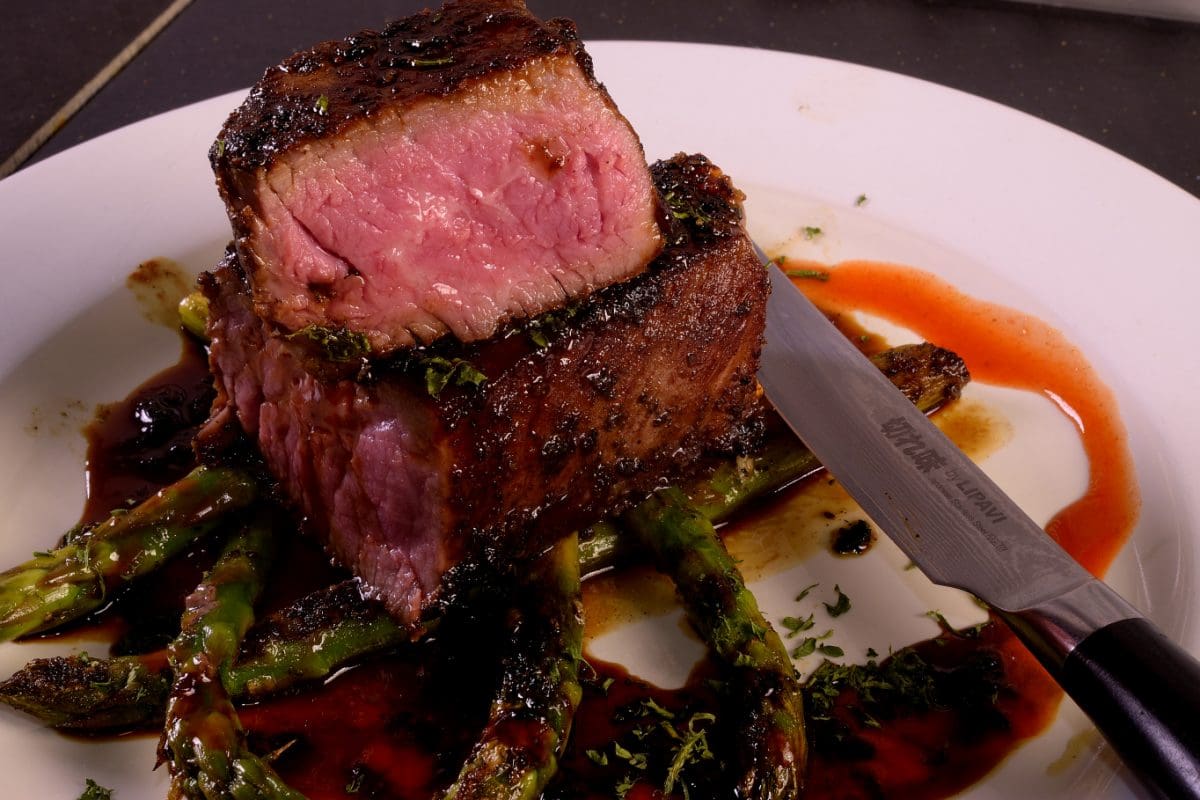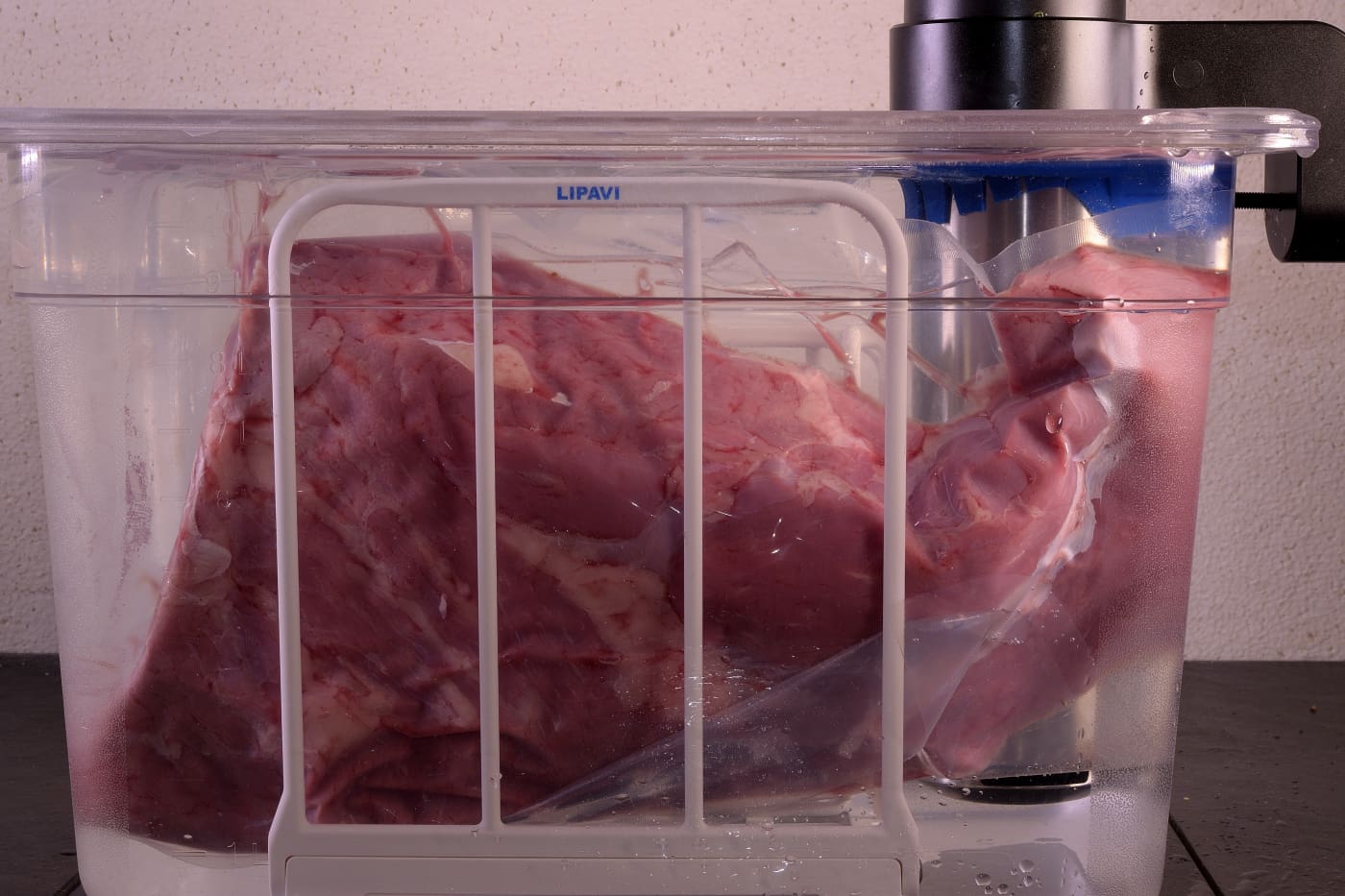
Above: Lipavi C10 container, N10 polycarbonate racks. Lipavi C10L-UNIR lid.
Actual prep time: 1 hour
Level of difficulty: 2
Serves: up to 9
About Beef Tri-tip
Butchers’ cases commonly offer “convenient” versions of beef tri tip cut into individual steaks. Usually cut into longish “strips,” they have a certain amount of “steak-like” visual appeal in the raw packaged state. Unfortunately, the amount of surface area in relation to the typical thickness and overall weight is too large to create a desirable finished product. For best results and regardless of the cooking method chosen, starting with the whole roast offers benefit. Most butchers will accommodate your request. The whole beef bottom sirloin roast comes in two forms…

unpeeled (above) and peeled (below).
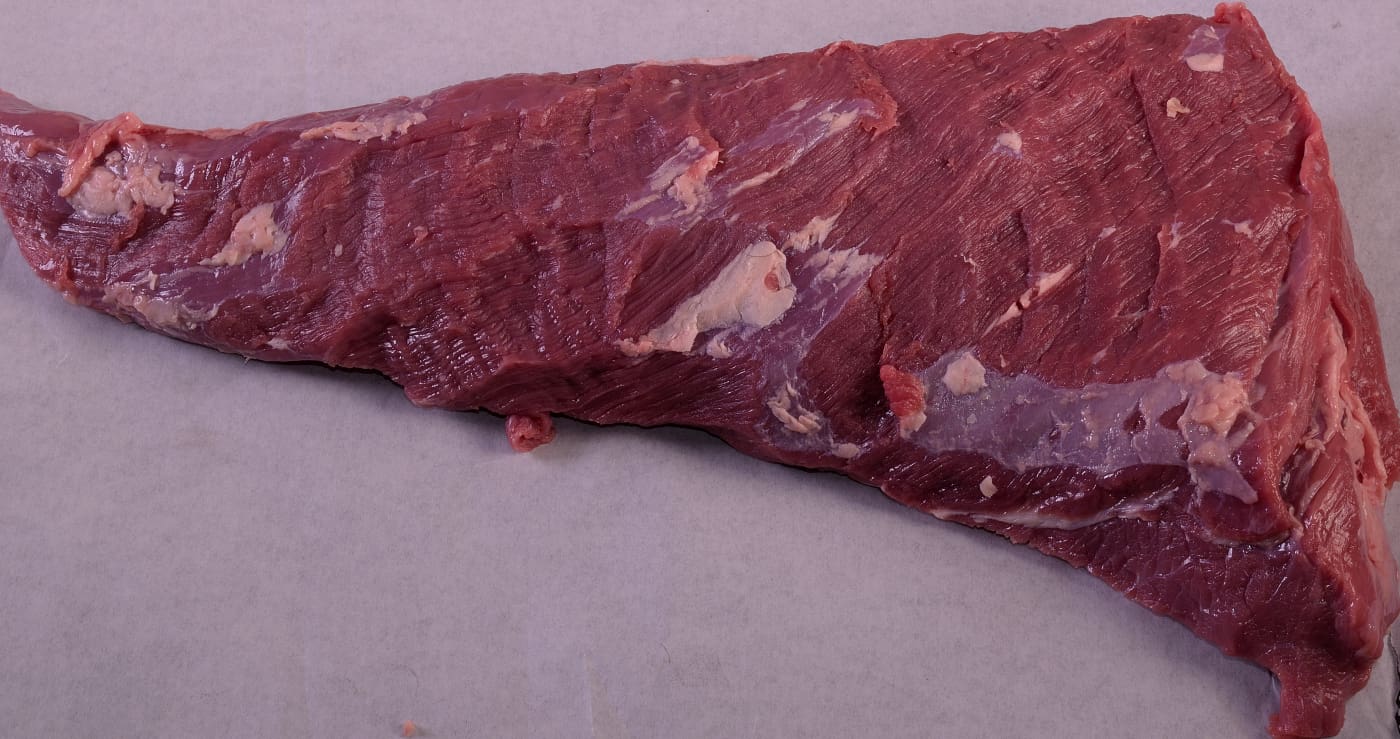
Removing the fatty tissue is not difficult, the peeled version is more convenient. The price for peeled should be no more than 150% of the price for unpeeled. If it is, avail yourself of a sharp boning knife and remove the fatty tissue yourself–either before or after processing. The trim can be used to make an excellent brown stock, explained HERE.
MORE options…
Once you have a roast in your possession, you can decide if you prefer to cut it into steaks before or after sous vide processing. Both methods work–I plead guilty to a preference for processing the roast whole with the peel on. And there is a reason. Sous vide processing (and other forms of cooking) discolor the protein’s surface during the cooking process. The less surface area in relation to overall size, the less discoloration. If the fat cap is left on during processing, the peeled surface retains better color. As always, the greater the surface area, the greater the loss of moisture.
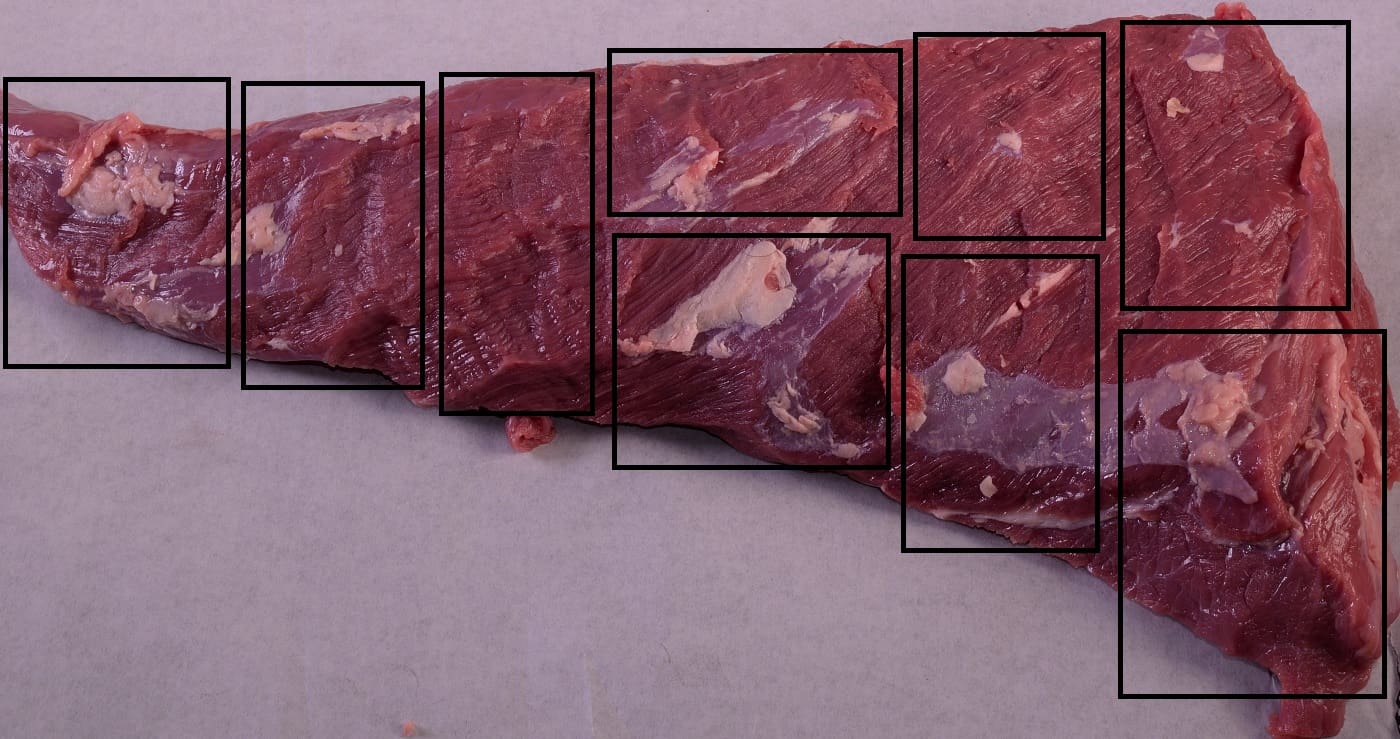
As an example, the diagram above shows how to cut 9 steaks from the peeled roast. In most cases they will average between 5-7 oz/150-210 g each.
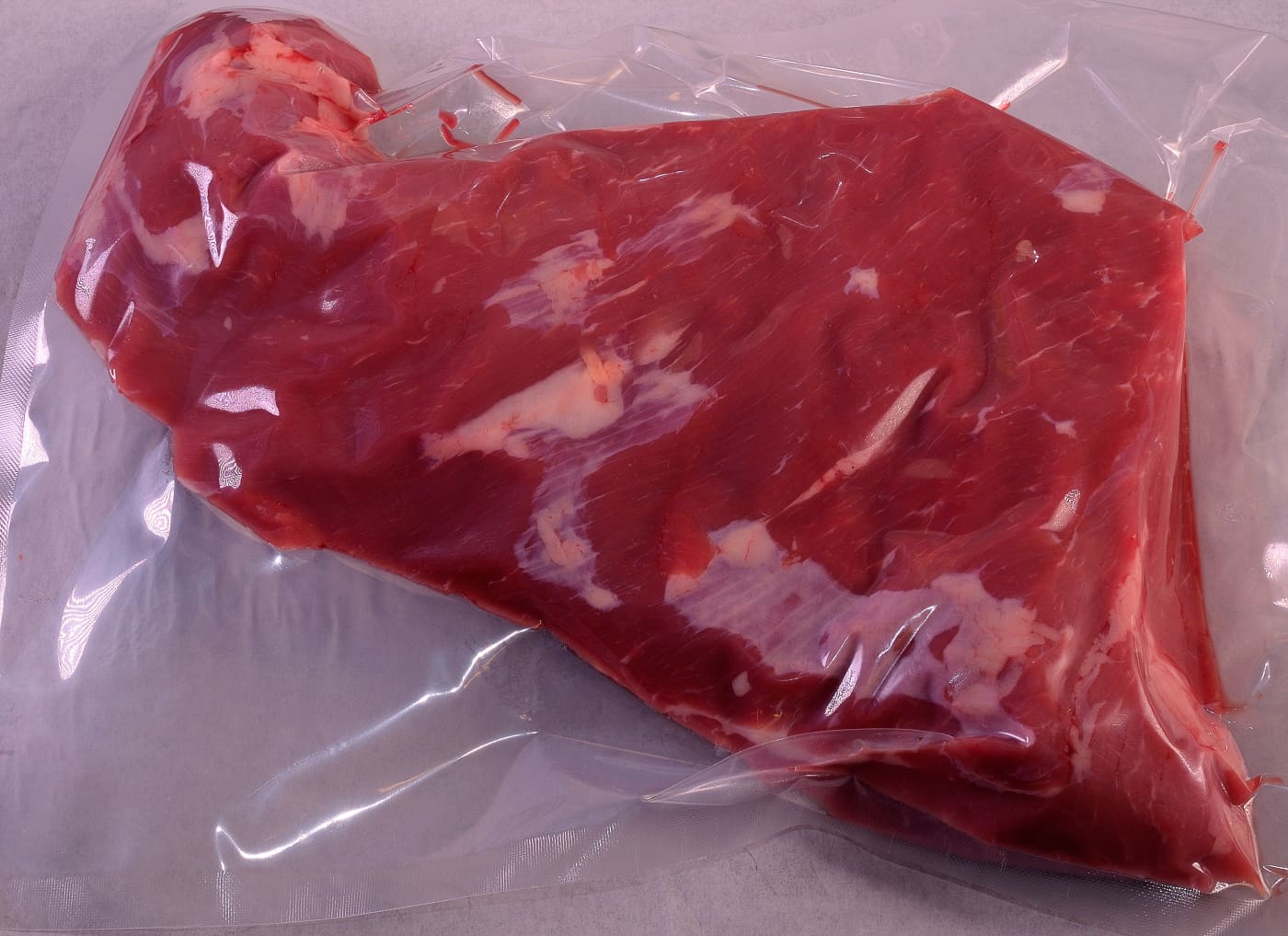
Vacuum seal the roast (above) or the steaks (below) in heat rated bags.

Process in a preheated bath at 129 F/54 C. Because of the unique characteristics of sous vide, the temperature/interval for the roast as almost the same as for the steaks.—approximately twelve hours for the roast, ten hours for individual steaks. Time in the bath determines texture/tenderness, but do not use a clock to MEASURE tenderness. This requires the acquisition of a small amount of skill, explained HERE. 129 F/54 C will create a medium rare appearance. If you prefer a different appearance of doneness, refer to the guide linked HERE.
Once the interval has elapsed and the desired level of tenderness has been achieved, remove the steaks/roast from the bag(s). Save the juices, which can be clarified according to the method explained HERE.

The peeled roast after processing (above) and the unpeeled roast after processing (below).
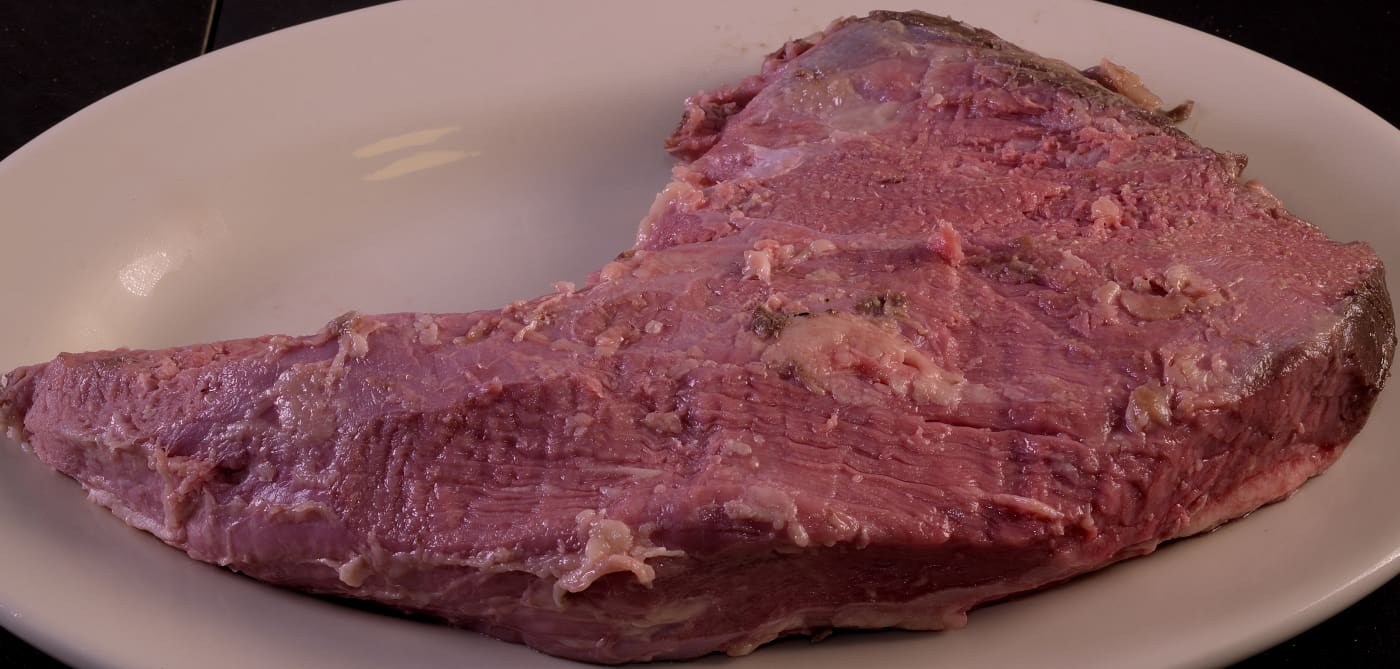
The appearance of the two different surfaces is definitely different.
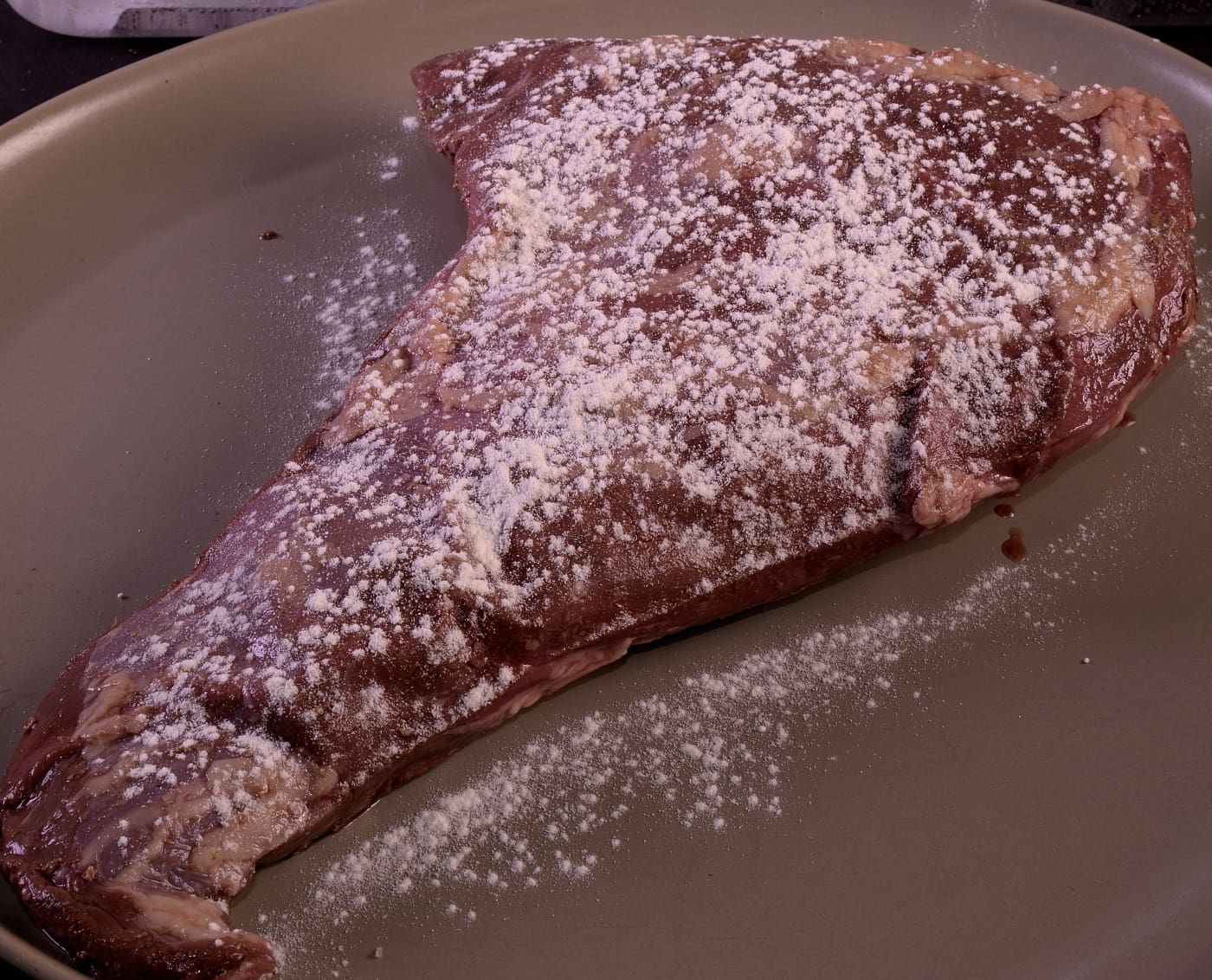
Dust the roast/steaks with powdered egg white. Fresh egg whites can also be used (sparingly). If you use fresh egg whites, skip the next step.
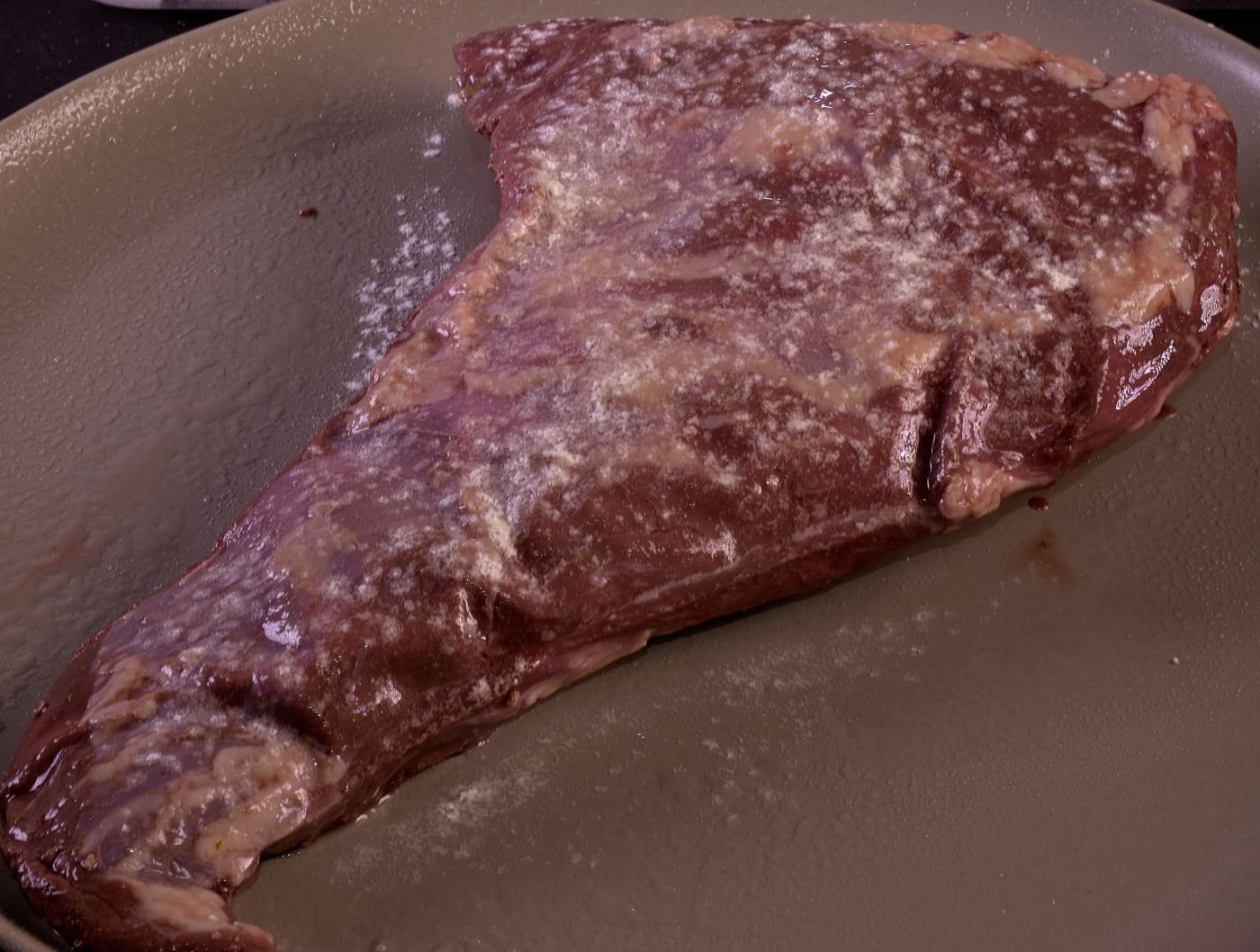
Sprinkle the powdered egg whites with water to dissolve the powdered egg white. This will create a sticky surface for seasonings to cling to.
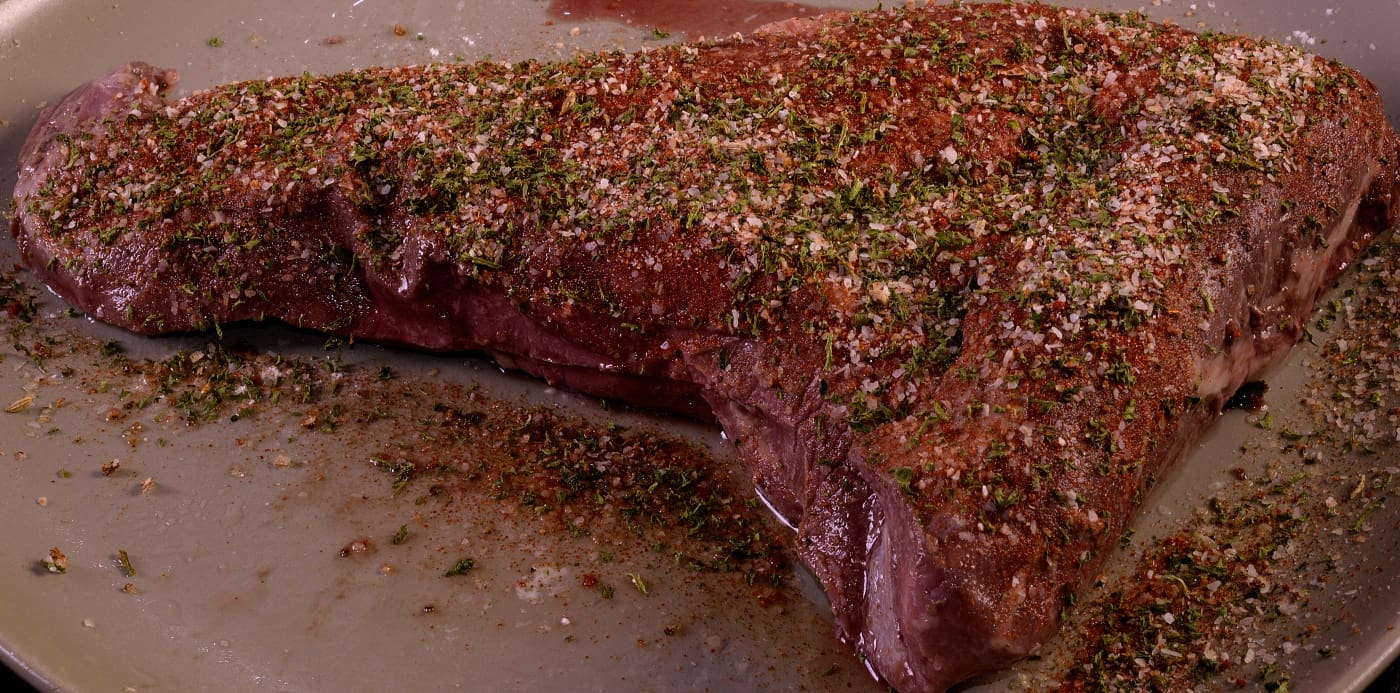
Season as desired. In the picture above we used our version of Cajun Spice before cutting into steaks. In the picture below, we cut the steaks before seasoning. Accommodate your own preference. After seasoning, spray or drizzle lightly with oil.

Heat a skillet or broiler pan to 250 F/121 C. Do not add oil until you detect hot air radiating from the pan without actually touching it.. Add enough oil to cover the bottom of the pan. Add the steak(s) immediately, but do not crowd the pan. There should be at least 2″/5 cm between each steak. Sear the steaks as desired. This process usually takes less than a minute per side.
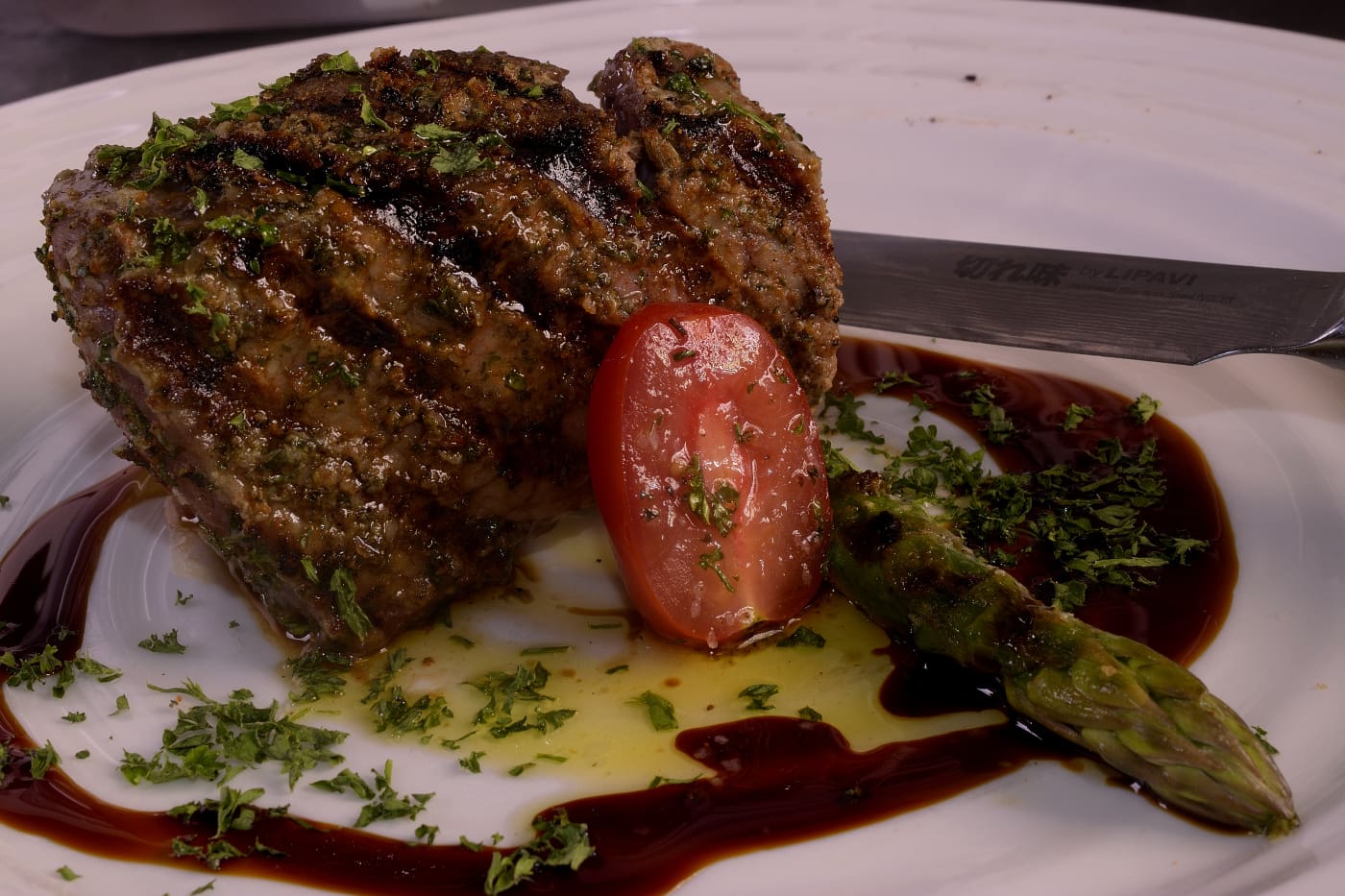
Asparagus, peeled, seasoned and grilled. A few drops of extra virgin olive oil for the tomato. Glace de viande, explained HERE.
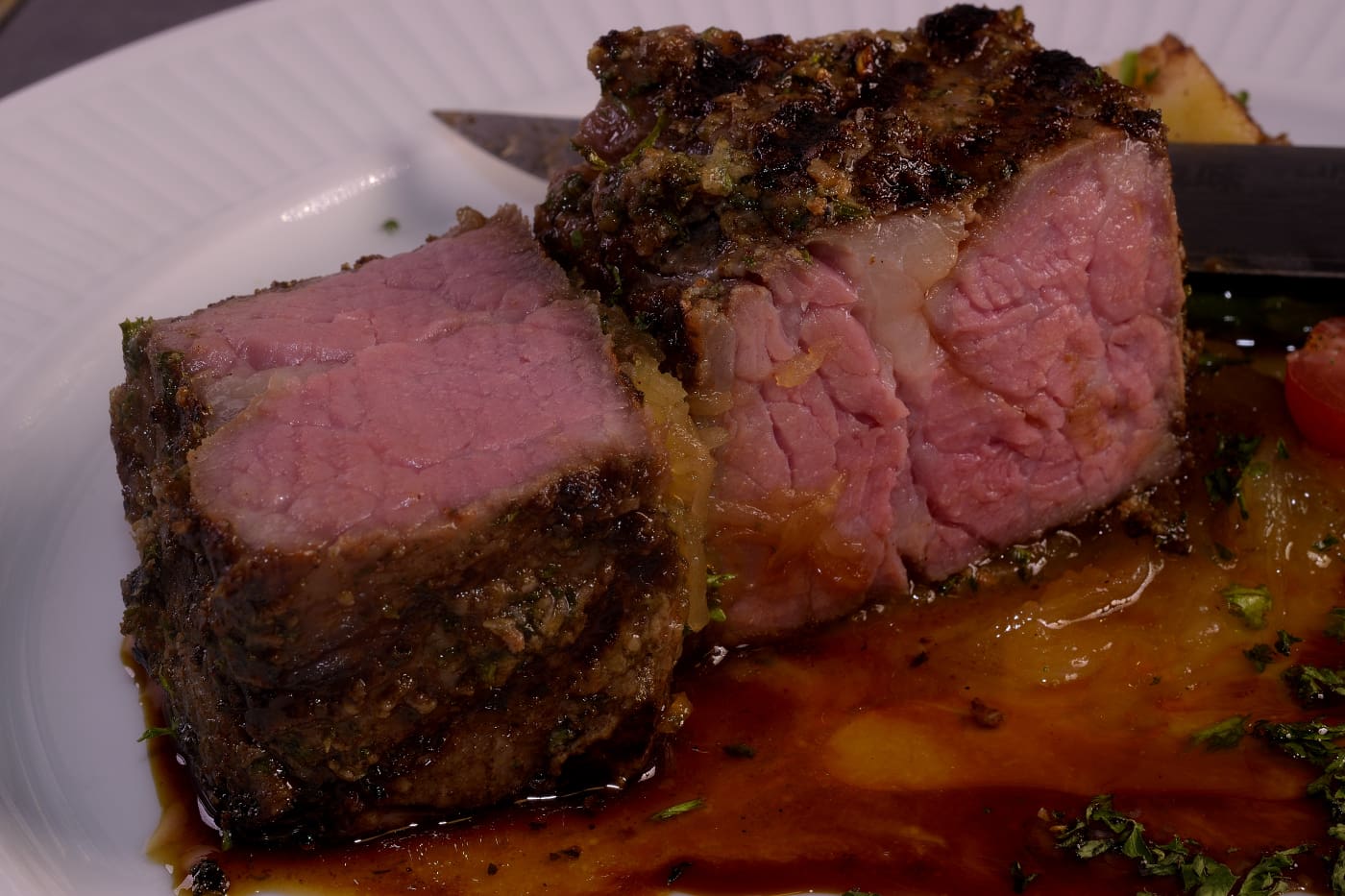
These steaks were sous vide processed before being cut–still my personal favorite.
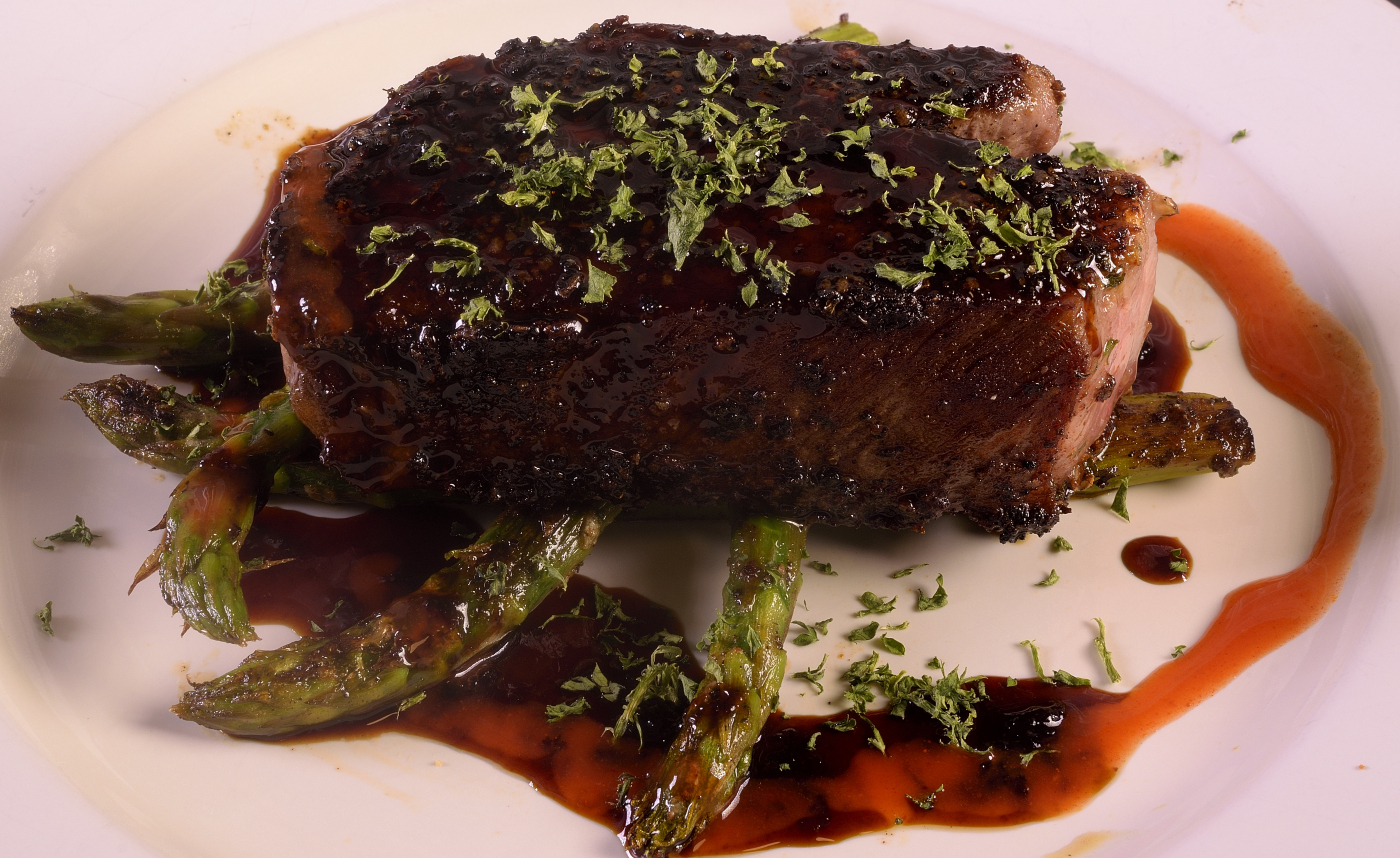
glace de viande, explained HERE.
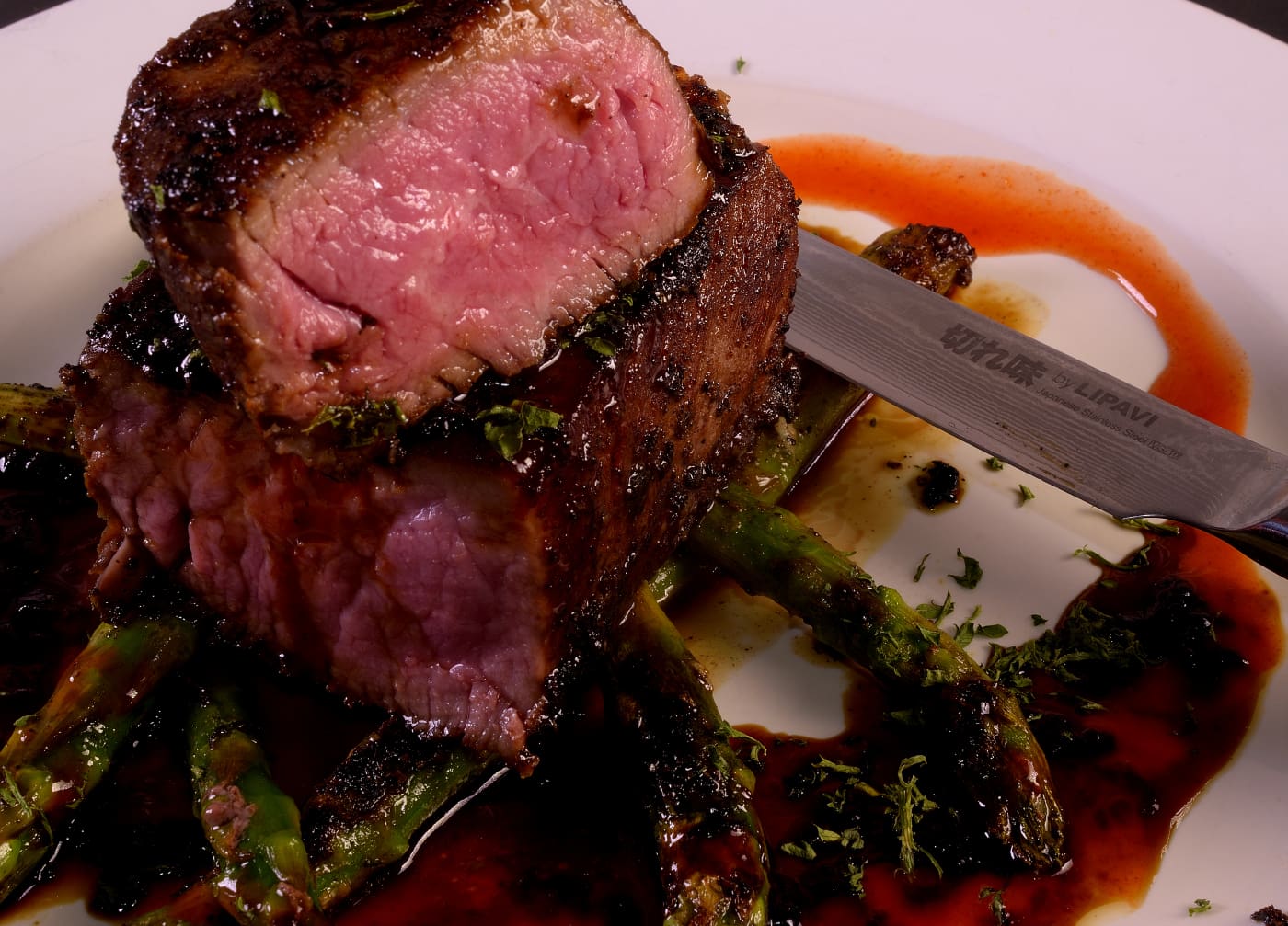
Spaghetti squash in the bottom of the frame.
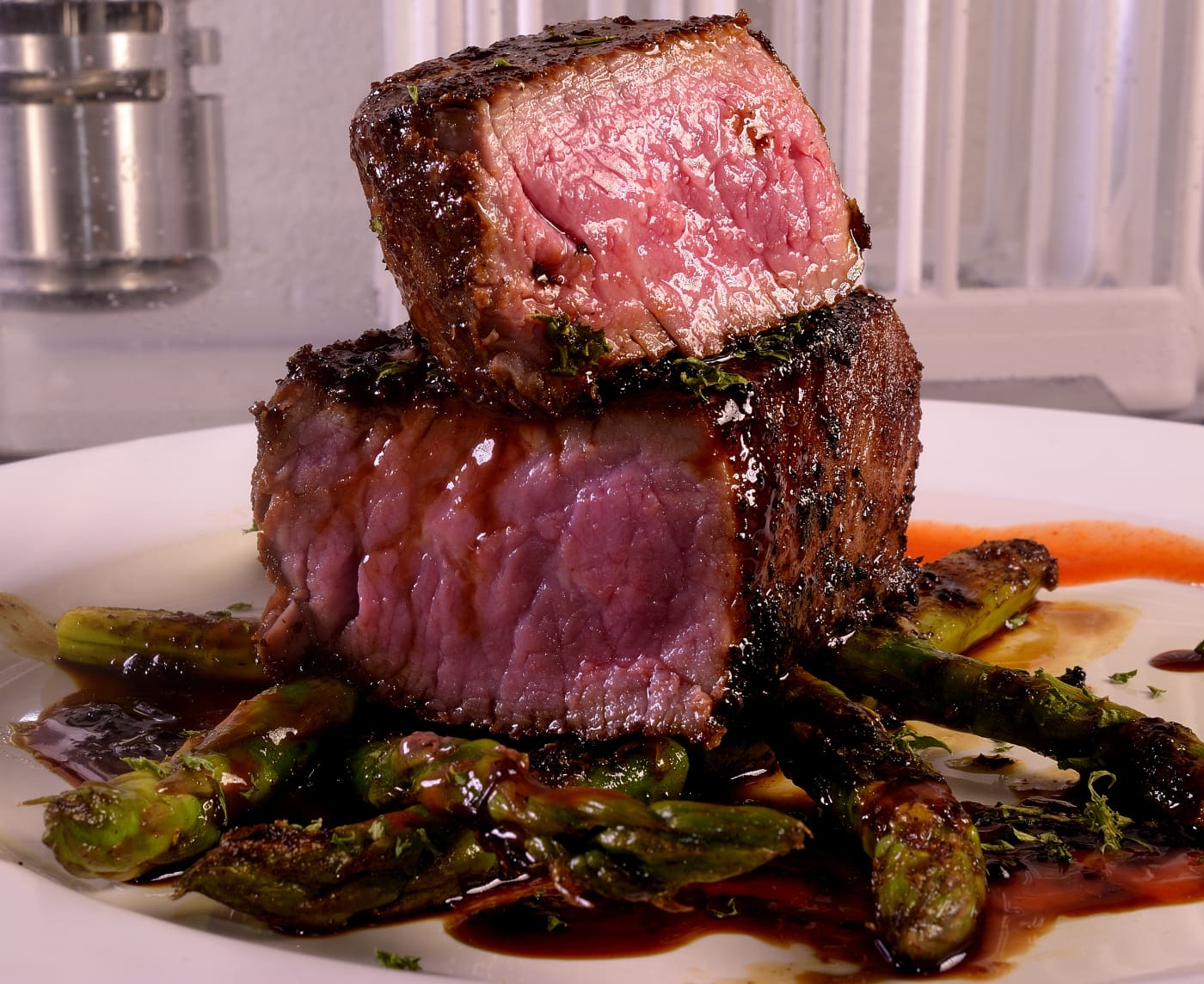
Norm King

Double length center cut, sort of a “Faux New York.”
